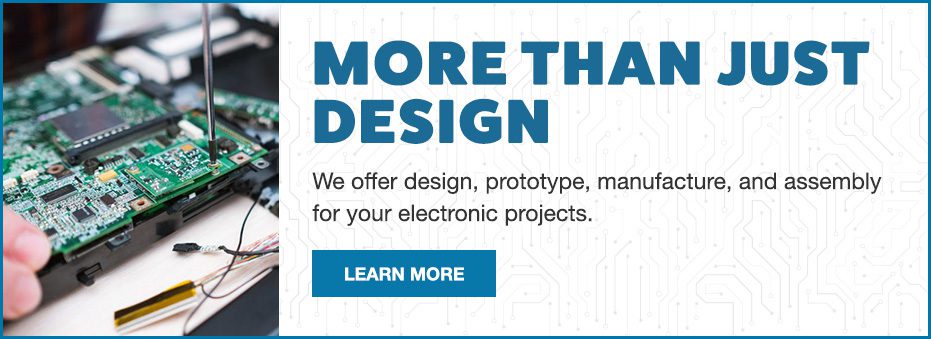The Future of Electronic Manufacturing: Industry Predictions
Warning: Attempt to read property "ID" on null in /srv/users/serverpilot/apps/lev-2023-wp/public/wp-content/themes/lev-2025/inc/cta_shortcode.php on line 15
Warning: Attempt to read property "post_content" on null in /srv/users/serverpilot/apps/lev-2023-wp/public/wp-content/themes/lev-2025/inc/cta_shortcode.php on line 16
Warning: Attempt to read property "ID" on null in /srv/users/serverpilot/apps/lev-2023-wp/public/wp-content/themes/lev-2025/inc/cta_shortcode.php on line 15
Warning: Attempt to read property "post_content" on null in /srv/users/serverpilot/apps/lev-2023-wp/public/wp-content/themes/lev-2025/inc/cta_shortcode.php on line 16
The demand for electronic manufacturing services continues to grow exponentially as technology advances and the demand for more electronic components in everyday devices continues. Predicting the future of technology is always difficult, as advancements happen rapidly and product development struggles to keep up, but understanding the needs of consumers can help product developers and electronic contract manufacturers prepare.

What are the Key Factors Driving the Electronic Manufacturing Sector?
The factors driving electronic manufacturing services are driven by consumers and their expectations. Some of the key factors driving the market today are
- Increasing desire for automobile electronics – some for safety, some for enhanced driver experience.
- Increased interest in smart technology, moving from smart phones to other smart devices, such as home gadgets and appliances.
- Increased demand for advancements in mobile technology.
Increased Demand for Wearable Technology
Wearable technology is a trend that continues to grow. VR headsets, watches, and activity trackers are still gaining popularity as they become more advanced. The market for wearable technology is projected to expand even further as technology advances and costs come down. Wearable technology demand has risen in recent years and has made a significant impact in electronic manufacturing.
Continued Demand for Smart Devices
Smartphones, smartwatches, and other personal gadgets are not the only smart devices on the market. The market for smart gadgets in the home and office continues to grow as the Internet of Things (IoT) continues to expand. Designers and developers who can embrace smart technology for products that have typically not been as technologically advanced in the past will be able to meet the consumer needs for cutting-edge smart devices.
Products with Quick Lifecycles
Between advancements in technology and the short attention span of users who are always looking for the next hot trend, consumers are wanting changes and new products more quickly. Developers and manufacturers need to be adaptable and ready to jump on new trends quickly to catch the attention of consumers. Many developers and manufacturers are focusing less on longevity and more on churning out new and advanced products quickly, but a balance needs to be struck to maintain a solid reputation for quality and durable products. While consumers have been quick to embrace upgrades, they are vocal when new technology has too short a lifespan. Developers and manufacturers need to ensure that they are not going too far in one direction or the other.
Advances in Technology
Technology has always advanced rapidly, with products struggling to keep up with new developments before becoming obsolete. 5G technology has started to fundamentally alter how electronic products are created, manufactured, and used by consumers. This advancement in technology has resulted in a new generation of devices that are faster and more effective. As e-commerce grows, consumers are looking for products that can make their online shopping simpler. Product developers who can incorporate 5G technology have a significant edge over those who are unable to keep up.
Rise in Renewable Energy
Green technology continues to grow, as developers, consumers, and manufacturers are all increasingly aware of their carbon footprint. The use of renewable energy sources is rising, and the projection is that it will continue to rise in the future. The demand for devices such as solar panels, wind turbines, and other devices to facilitate the use of green energy is expected to grow, and developers that can create these products early will have a significant competitive advantage over those who are slower to adopt green energy sources.
Understanding of Global Supply Chain
Component shortages have rocked the electronic industry in recent years, but there are lessons to be learned from these struggles. Quality electronic contract manufacturers have become more proactive in how they handle their global supply chain. While anticipating needs and sourcing components in advance is a strategy, it should not be the only strategy relied on. Experienced ECMs are dedicated to having a roster of vetted suppliers they trust and can rely on. Product traceability is increasingly important, meaning the risk of counterfeit components is greater than ever. Supply chain management ensures that products can be developed with the availability of components as a consideration. Creating a system for component availability, quality, and traceability can save time and money for ECMs and product developers.
What Should You Look for in an ECM?
Choosing the right electronic contract manufacturing partner is crucial to the success of your product. A domestic, turnkey facility is the best place to start, but beyond that there are some key factors to look for. You will benefit greatly from a partner with high quality standards. Ask how their process works, what suppliers they use for electronic components, their manufacturing methods, and what is included in their quote. Some quality electronic contract manufacturers offer design support, have the right certifications to work with your industry, have an onsite team of engineers, offer DFM analysis and rapid prototyping, and have a project manager that will work with you for open communication and realistic project timelines.
Choosing an electronic contract manufacturer who is committed to looking forward and embracing new advancements in technology is crucial. The electronic contract manufacturing industry is evolving rapidly, and the best ECMs will be dedicated to staying current with materials, methods, and innovations. The demand for electronic components continues to rise, and the right ECM will be ready to face the challenges with you to create the products of the future. Contact Levison Enterprises for a quote on your next project to see first hand how we can help you bring a better product to market.
